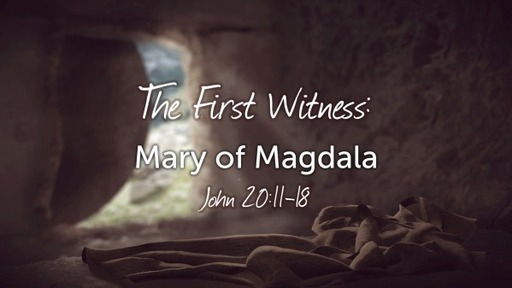The First Witness: Mary of Magdala

1. The “Throne of Grace”, vs. 11-12.
2. Question: “Why are you weeping?”, vs. 13-15.
3. The Ascension, vs. 16-17.
He bade the disciples touch him, for the confirmation of their faith; he allowed the women to take hold of his feet, and worship him (Mt. 28:9); but Mary, supposing that he was risen, as Lazarus was, to live among them constantly, and converse with them freely as he had done, upon that presumption was about to take hold of his hand with her usual freedom. This mistake Christ rectified; she must believe him, and adore him, as exalted, but must not expect to be familiar with him as formerly. See 2 Co. 5:16. He forbids her to dote upon his bodily presence, to set her heart on this, or expect its continuance, and leads her to the spiritual converse and communion which she should have with him after he was ascended to his Father; for the greatest joy of his resurrection was that it was a step towards his ascension
